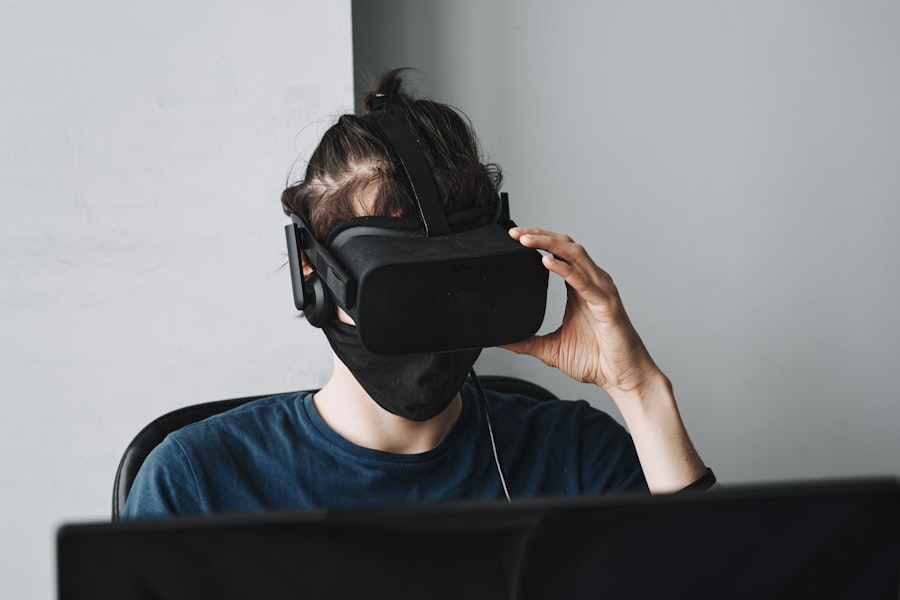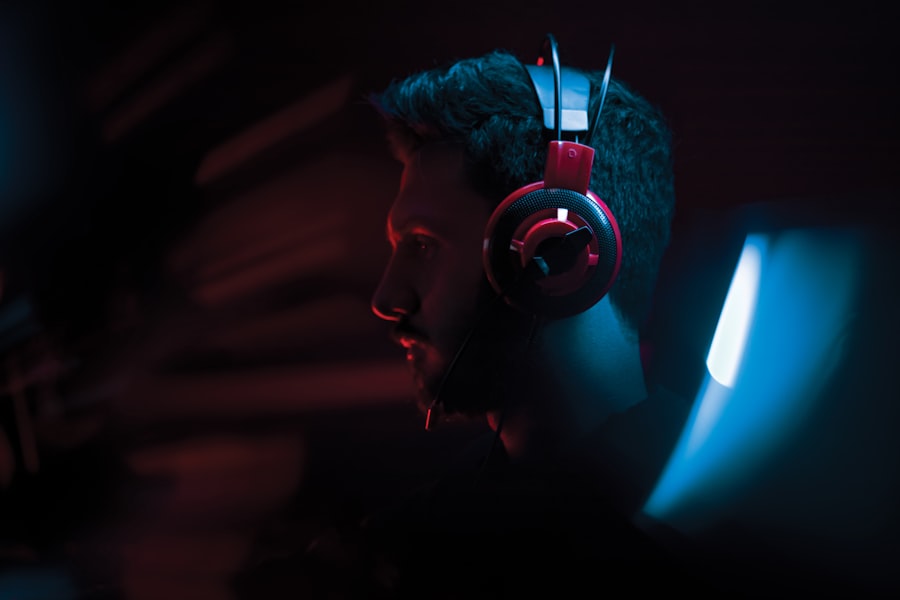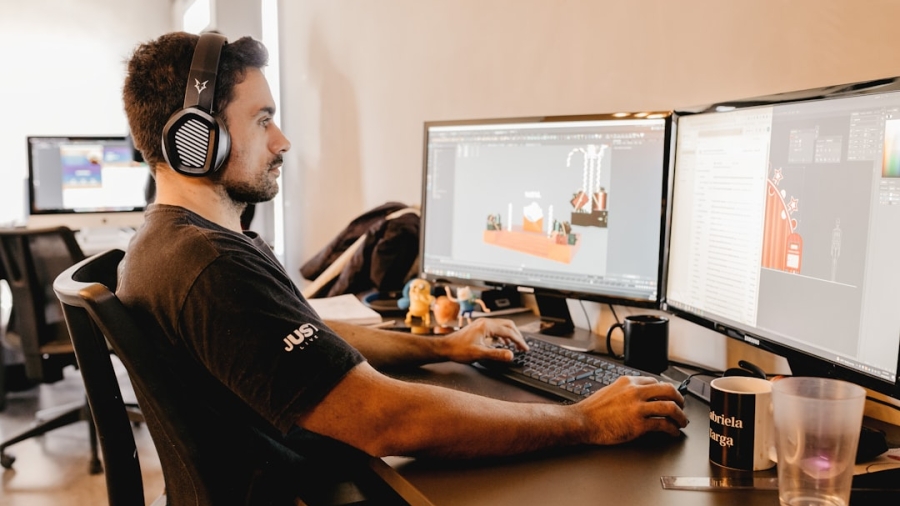Mixed Reality (MR) is an innovative technological paradigm that merges the physical and digital worlds, creating an immersive environment where real and virtual elements coexist and interact in real-time. Unlike Virtual Reality (VR), which immerses users entirely in a computer-generated environment, or Augmented Reality (AR), which overlays digital information onto the real world, MR offers a more sophisticated blend of both realms. This integration allows users to engage with digital objects as if they were part of their physical surroundings, enabling a seamless interaction that enhances the overall experience.
The term “mixed reality” encompasses a spectrum of experiences, from simple overlays of digital content to complex simulations where virtual objects can respond to real-world physics and user actions. The significance of MR lies in its potential to transform how we perceive and interact with our environment. By allowing users to manipulate digital content within their physical space, MR creates opportunities for enhanced learning, collaboration, and creativity.
For instance, in educational settings, students can visualize complex concepts through interactive 3D models that they can manipulate and explore. In professional environments, teams can collaborate on projects using shared virtual workspaces that transcend geographical boundaries. As technology continues to evolve, the definition of mixed reality expands, encompassing a wide array of applications that promise to redefine our interaction with both the digital and physical worlds.
Key Takeaways
- Mixed Reality (MR) combines elements of both virtual reality and augmented reality to create a seamless blend of the physical and digital worlds.
- The components of MR include hardware such as headsets and sensors, software for creating and rendering digital content, and spatial mapping technology for understanding the physical environment.
- MR works by integrating digital content into the user’s physical environment, allowing for interaction and manipulation of virtual objects in real time.
- MR has applications in various industries such as gaming, education, healthcare, and manufacturing, offering immersive experiences and enhanced productivity.
- The advantages of MR include enhanced user engagement, improved training and simulation, and increased efficiency in design and visualization processes.
The Components of Mixed Reality
Understanding the Core Components of Mixed Reality
To fully understand mixed reality, it is essential to explore its core components, which include hardware, software, and user interaction mechanisms. The hardware aspect typically involves head-mounted displays (HMDs), sensors, cameras, and computing devices that work together to create an immersive experience. HMDs like Microsoft’s HoloLens or Magic Leap One are equipped with advanced optics and sensors that track the user’s movements and the surrounding environment.
Hardware and Its Role in Mixed Reality
These devices allow users to see both the real world and digital overlays simultaneously, providing a unique perspective that enhances spatial awareness and interaction. Additionally, sensors and cameras play a crucial role in capturing the physical environment, enabling the system to accurately place virtual objects within it. This seamless integration of the physical and digital worlds is what sets mixed reality apart from other technologies.
Software and User Interaction in Mixed Reality
On the software side, mixed reality relies on sophisticated algorithms and platforms that facilitate the rendering of digital content in real-time. This includes spatial mapping technologies that create a 3D representation of the user’s environment, allowing virtual objects to be anchored in specific locations. Furthermore, user interaction mechanisms such as gesture recognition, voice commands, and eye tracking enhance the immersive experience by allowing users to engage with digital content intuitively.
The Future of Mixed Reality
As advancements in technology continue to emerge, the components of MR are becoming increasingly sophisticated, paving the way for more realistic and interactive experiences. With ongoing innovation, the potential applications of mixed reality are vast and varied, from gaming and education to healthcare and beyond.
How Mixed Reality Works

The functioning of mixed reality is a complex interplay between hardware and software that enables the seamless integration of real and virtual elements. At its core, MR systems utilize sensors and cameras to gather data about the physical environment. This data is processed to create a spatial map that identifies surfaces, objects, and their relative positions.
Once this mapping is established, the system can accurately place virtual objects within the user’s field of view, ensuring they appear anchored in the real world. This spatial awareness is crucial for creating a convincing mixed reality experience, as it allows digital content to interact with physical elements in a meaningful way. In addition to spatial mapping, mixed reality systems employ advanced rendering techniques to display virtual objects convincingly.
These techniques take into account factors such as lighting, shadows, and occlusion—where virtual objects are hidden behind real-world objects—to enhance realism. For instance, if a user places a virtual chair in their living room using an MR device, the system will adjust the chair’s appearance based on the room’s lighting conditions and ensure it is obscured by any physical objects in front of it. This level of detail not only enriches the user experience but also fosters a sense of presence, making users feel as though they are genuinely interacting with both real and virtual elements.
Applications of Mixed Reality
Mixed reality has found applications across various sectors, revolutionizing industries such as education, healthcare, entertainment, and manufacturing. In education, MR provides students with immersive learning experiences that go beyond traditional methods. For example, medical students can practice surgical procedures using realistic simulations that allow them to interact with 3D anatomical models.
This hands-on approach enhances understanding and retention of complex concepts while providing a safe environment for practice. Similarly, in fields like architecture and engineering, professionals can visualize designs in real-world contexts before construction begins, facilitating better decision-making and collaboration among stakeholders. In healthcare, mixed reality is being utilized for training medical professionals and improving patient outcomes.
Surgeons can use MR to overlay critical information during procedures or practice complex surgeries in a simulated environment before operating on actual patients. This technology not only enhances surgical precision but also reduces risks associated with traditional training methods. Furthermore, MR applications extend into entertainment through immersive gaming experiences that blend physical movement with virtual gameplay.
Users can engage with their surroundings while interacting with digital characters or environments, creating a dynamic form of entertainment that captivates audiences.
Advantages of Mixed Reality
The advantages of mixed reality are manifold, offering significant benefits across various domains. One of the most notable advantages is its ability to enhance learning and retention through immersive experiences. By engaging multiple senses and providing interactive content, MR facilitates deeper understanding and retention of information compared to traditional learning methods.
This is particularly beneficial in fields such as science and engineering, where complex concepts can be visualized and manipulated in three dimensions. The hands-on nature of MR experiences encourages active participation, fostering curiosity and motivation among learners. Another significant advantage of mixed reality is its potential for improved collaboration and communication in professional settings.
MR enables teams to work together in shared virtual spaces regardless of their physical locations. This capability is especially valuable in industries such as design and engineering, where stakeholders can visualize projects collaboratively in real-time. By bridging geographical gaps, MR fosters innovation and creativity while streamlining workflows.
Additionally, the ability to visualize data in an interactive manner allows for more informed decision-making processes, ultimately leading to better outcomes for organizations.
Challenges of Mixed Reality

Financial Barriers to Adoption
One primary concern is the high cost associated with MR hardware and software development. Advanced headsets and sensors can be prohibitively expensive for many organizations or individuals looking to implement MR solutions. This financial barrier can hinder access to the technology and limit its potential applications across various sectors.
The Challenge of Keeping Up with Advancements
Moreover, as MR technology continues to evolve rapidly, keeping up with advancements can be challenging for developers and users alike.
Ensuring User Comfort and Safety
Another significant challenge lies in ensuring user comfort and safety during mixed reality experiences. Prolonged use of MR devices can lead to discomfort or fatigue due to factors such as weight or visual strain from extended screen time. Additionally, users may become disoriented when transitioning between real and virtual environments if proper safety measures are not implemented. Developers must prioritize ergonomics and user experience design to create comfortable devices that minimize these risks while maximizing engagement.
Addressing these challenges will be crucial for fostering broader acceptance of mixed reality technology.
Future of Mixed Reality
The future of mixed reality holds immense promise as technology continues to advance at an unprecedented pace. As hardware becomes more affordable and accessible, we can expect an increase in adoption across various industries. Innovations such as lightweight headsets with improved battery life and enhanced field-of-view capabilities will likely make MR experiences more comfortable and appealing to users.
Furthermore, advancements in artificial intelligence (AI) will enable more sophisticated interactions within mixed reality environments, allowing for personalized experiences tailored to individual preferences and needs. Moreover, as 5G technology becomes more widespread, it will facilitate faster data transmission and lower latency for mixed reality applications. This connectivity will enhance real-time interactions between users and digital content while enabling cloud-based processing for more complex simulations without relying heavily on local hardware resources.
As these technological advancements converge, we may witness a new era of mixed reality experiences that blur the lines between physical and digital realities even further—transforming how we learn, work, play, and connect with one another.
Embracing Mixed Reality
In conclusion, mixed reality represents a groundbreaking fusion of physical and digital worlds that has the potential to revolutionize various aspects of our lives. By defining MR as an immersive experience where real and virtual elements coexist harmoniously, we can appreciate its transformative power across education, healthcare, entertainment, and beyond. The components that make up mixed reality—hardware, software, and user interaction—work together seamlessly to create engaging experiences that enhance learning and collaboration.
As we navigate the challenges associated with mixed reality technology—such as cost barriers and user comfort—it is essential to embrace its potential benefits while striving for solutions that promote accessibility and usability. The future of mixed reality is bright; as advancements continue to unfold, we stand on the brink of a new era where our interactions with both physical spaces and digital content will be richer than ever before. Embracing this technology will not only enhance our understanding of complex concepts but also foster creativity and innovation across diverse fields—ultimately reshaping how we perceive our world.
If you’re interested in understanding the broader context of technological advancements, particularly in the realm of Mixed Reality (MR), you might find it useful to explore how various software tools are evolving to support complex systems analysis. A related article that delves into this topic is Best Software for Fault Tree Analysis in 2023. This article provides insights into the latest software solutions that are crucial for analyzing and mitigating faults in systems, which can be integral for developing and maintaining stable MR environments. Understanding these tools can give you a deeper appreciation of the backend technologies that support immersive MR experiences.
FAQs
What is mixed reality (MR)?
Mixed reality (MR) is a technology that combines elements of both virtual reality (VR) and augmented reality (AR) to create an interactive and immersive environment where physical and digital objects coexist and interact in real time.
How does mixed reality work?
Mixed reality works by using sensors, cameras, and advanced algorithms to map and understand the user’s physical environment. It then overlays digital content, such as holograms or virtual objects, onto the real world, allowing users to interact with both the physical and digital elements simultaneously.
What are some examples of mixed reality applications?
Some examples of mixed reality applications include virtual design and prototyping, interactive gaming experiences, immersive training simulations, and virtual collaboration tools for remote teams.
What are the key components of a mixed reality system?
Key components of a mixed reality system typically include a headset or glasses with built-in displays, sensors for tracking the user’s movements and the surrounding environment, and a computing device to process and render the mixed reality experience.
What are the potential benefits of mixed reality technology?
The potential benefits of mixed reality technology include enhanced visualization and interaction, improved productivity and efficiency in various industries, new opportunities for creative expression and entertainment, and the ability to bridge physical and digital worlds in innovative ways.

